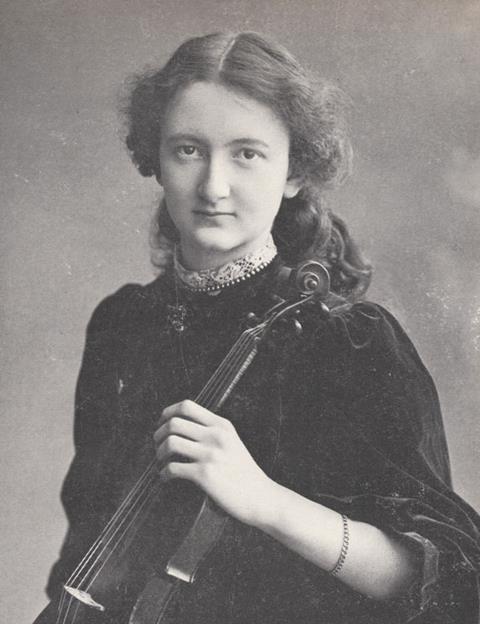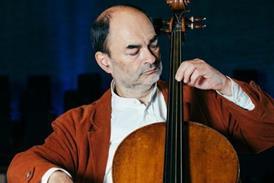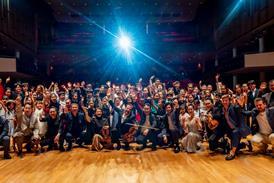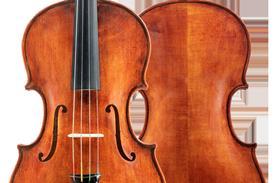Lilly Camden profiles the 20th-century female violinist, a child prodigy who had a prolific, yet short-lived performing and recording career

Discover more Featured Stories like this in The Strad Playing Hub
Born in Canada in 1890, the violinist Kathleen Parlow was perhaps the most renowned female violinists at the beginning of the 20th century. She began her career as a brilliant child prodigy, and made her London debut at the age of 14 performing the Beethoven Concerto with the LSO, presenting a recital at the Bechstein (now Wigmore) Hall and performing before King Edward VII at Buckingham Palace.
Two years later she went to St Petersburg where she became a student of the legendary Leopold Auer, the teacher of Mischa Elman, Jascha Heifetz and Nathan Milstein. Even among such remarkable talents, Parlow stood out (Auer even referred to her as ‘Mischa Elman in a skirt’). While still a student, Parlow performed with such legendary conductors as Thomas Beecham and Bruno Walter, and Glazunov, the director of the St Petersburg Conservatory at the time, recommended that she give the Belgian premiere of his Violin Concerto.
Parlow became a great favourite in Norway, where the Norwegian composer Johan Halvorsen dedicated his violin concerto to her which she premiered to great acclaim in Holland. Furthermore, a wealthy Norwegian patron bought her a 1735 Guarneri ’del Gesù’ violin that had formerly belonged to Viotti.
In 1908, before she turned 18, Parlow was signed up to make her first recordings by the Gramophone Company, also known as ‘His Master’s Voice’ (HMV). Remarkably, she was guaranteed a special ‘artist royalty’ of 10 per cent, a figure that matched what the company paid Luisa Tetrazzini, the most famous coloratura soprano of the day.
In 1909, she returned to Canada where she made an extensive tour and gave her North American debut. She was subsequently signed up by the Columbia Record Company. Her recordings for Columbia were made between 1912 and 1916 and brought out alongside those of the legendary Eugene Ysaÿe.
After the Great War, Parlow gave several world tours, travelling as far afield as the Middle East, India, China, Korea and Japan in the early 1920s. Following these exhausting years of travel, Parlow became tired of life as a touring virtuoso, and decided to retire from giving concerts. In 1925 she left England and settled in San Francisco where she focused on a teaching career.
After living briefly in New York from 1936 to 1941, she returned to Canada where she remained until her death in 1963. She taught at the Royal Conservatory in Toronto, where she imparted the great Auer tradition of violin playing.
Despite giving up a full-time career as a concert soloist, Parlow still gave occasional recitals and concerto appearances. She was primarily active as a chamber musician; she was a member of the Canadian Piano Trio with cellist Zara Nelsova and pianist Ernest MacMillan, and founded the Parlow Quartet.
Review: The Strad Recommends: Kathleen Parlow: Bach, Grieg, Mendelssohn etc
Read: Twisted History: Female violinists and the Brahms concerto
Read: All-female string quartets of the 19th and 20th centuries
Read more Featured Stories like this in The Strad Playing Hub
The number one source for playing and teaching books, guides, CDs, calendars and back issues of the magazine.
In The Best of Technique you’ll discover the top playing tips of the world’s leading string players and teachers. It’s packed full of exercises for students, plus examples from the standard repertoire to show you how to integrate the technique into your playing.
The Strad’s Masterclass series brings together the finest string players with some of the greatest string works ever written. Always one of our most popular sections, Masterclass has been an invaluable aid to aspiring soloists, chamber musicians and string teachers since the 1990s.
American collector David L. Fulton amassed one of the 20th century’s finest collections of stringed instruments. This year’s calendar pays tribute to some of these priceless treasures, including Yehudi Menuhin’s celebrated ‘Lord Wilton’ Guarneri, the Carlo Bergonzi once played by Fritz Kreisler, and four instruments by Antonio Stradivari.






































No comments yet